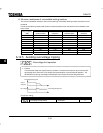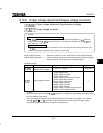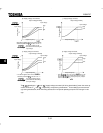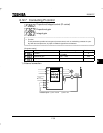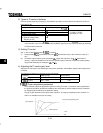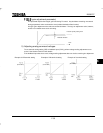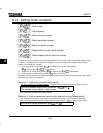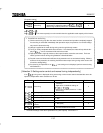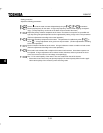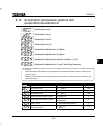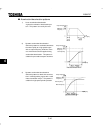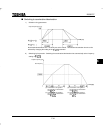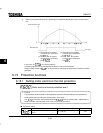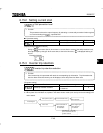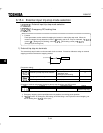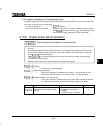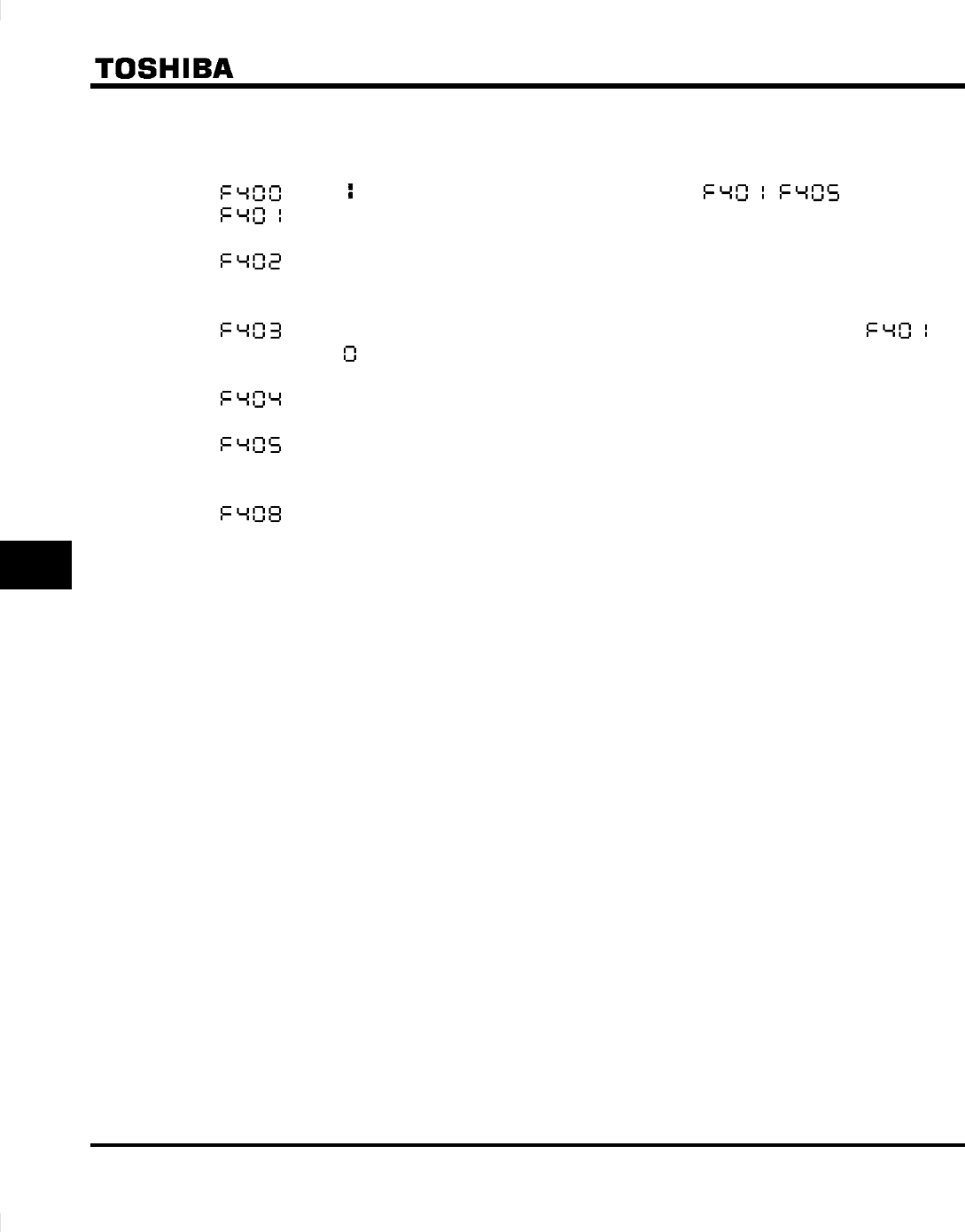
E6580757
F-38
6
Setting procedure
Adjust the following parameters:
: Select " " to set the motor constant independently using the ∼ parameters.
: Set the slip frequency for the motor. A higher slip frequency reduces motor slipping correspond-
ingly. (The slip frequency can be set on the basis of test records of the motor.)
: Adjust the primary resistive component of the motor. Decreases in torque due to a possible volt-
age drop during low-speed operation can be suppressed by setting a large value in this parameter.
(Perform adjustments according to the actual operation.)
: Adjust the secondary component of the motor. This parameter is enabled only when is
set to "
". A larger adjustment value gives more slip correction. (Perform adjustments according
to the actual operation.)
: Set the excitation inductance for the motor. A larger inductance creates a smaller no-load current.
(Perform adjustments according to the actual operation.)
: Set a load inertia moment with a multiple of the motor inertia moment. A transient response can
be adjusted. A larger adjustment value reduces inertial overshoot, and thus prevents the occur-
rence of an overcurrent and an overvoltage, correspondingly.
: Set "1" if the rated capacity of the motor is one size smaller than that of the inverter.
* Sensorless vector control may not operate properly if the motor capacity differs from the appli-
cable rated capacity of the inverter by more than two grades.



